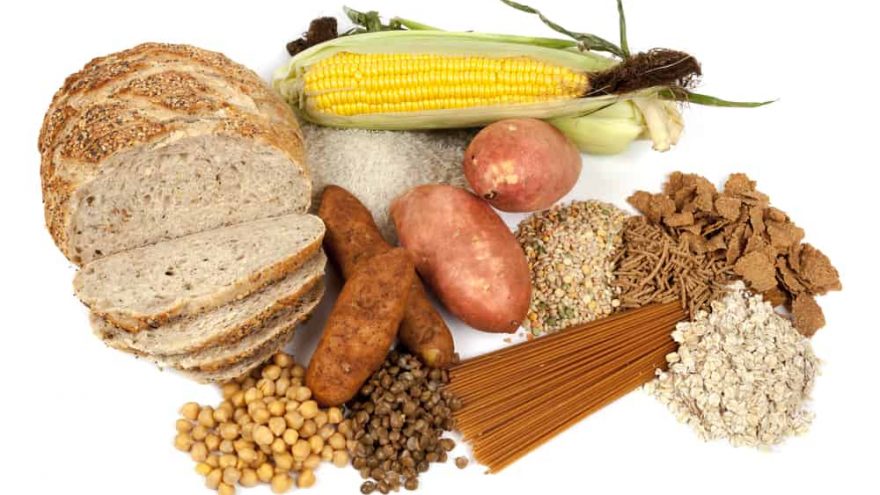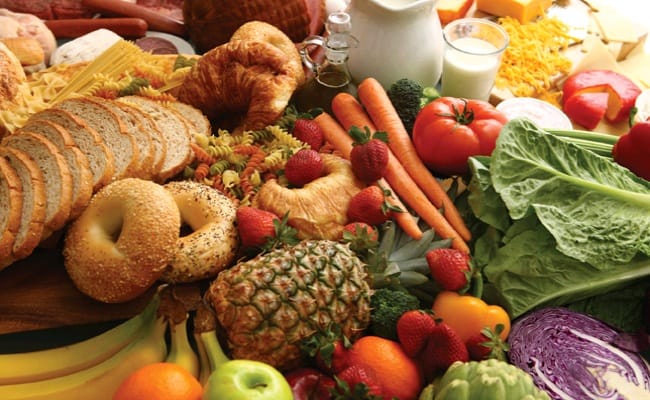Tips on How to Incorporate Soluble and Insoluble Fibers in Your Diet
Disclosure: We use affiliate links and may receive a small commission on purchases.
 Tips on How to Incorporate Soluble and Insoluble Fibers in Your Diet
thefitbay.com
Tips on How to Incorporate Soluble and Insoluble Fibers in Your Diet
thefitbay.com
We have all heard of the term, “fiber,” and how it is highly regarded to being essential to our daily health. However, few people can actually explain just why fiber in particular is so important to the core of our well-being. To sum it it, fiber not only promotes gut health, but it additionally assists to reduce the risk of the development of countless chronic diseases. For example, fiber can help to prevent constipation, hemorrhoids and even diverticulosis. And, a diet that is high in fiber is also known to help reduce the risk of developing certain types of cancer, particularly colon and breast cancer. High fiber diets have even been proven to help to lower LDL (the bad kind) cholesterol and total cholesterol. High-fiber foods also typically have a lower glycemic index value, which is an invaluably important aspect of helping to manage Type 2 diabetes.
What is Dietary Fiber

Dietary fiber (which is the edible portion of plant cell walls of which are resistant to digestion) is a highly beneficial component of our daily diet. It assists in warding off countless diseases, and it has been noted to even help assist in weight loss by way of reducing one’s overall food intake at meals.
Why? It is due to the fact that foods that are loaded with fiber actually take longer to digest and in turn result in the increased feeling of fullness and satiety.
And, more gradual absorption helps to slow the entrance of glucose into your bloodstream, which largely prevents blood glucose and insulin spikes.
Daily Fiber Intake

Your daily fiber intake should fall in the range of 20 – 35 grams each day for adults, which is the equivalent of about 10 – 13 grams per every 1,000 calories in your daily diet. This amount should come from a mix of soluble and insoluble fiber as they both offer various benefits. It’s not necessary to really track as a 3:1 ratio of insoluble to soluble fiber is pretty typical in one’s diet.
Though neither type of fiber is actually absorbed by your body, they both have distinct attributes when mixed with water which is the main distinction between the two sources. Soluble fiber is fiber that is “soluble” in water. When soluble fiber is mixed in water it develops into a gel-like substance and begins to swell. Soluble fiber has a ton of benefits, such as moderating blood glucose levels and lowering cholesterol. Some notable sources of soluble fiber include foods such as oats, oatmeal, legumes (peas, beans, lentils), barley, fruits and vegetables (particularly oranges, apples and carrots).
Insoluble fiber is fiber that does not absorb or dissolve in water. It additionally passes through the body’s digestive system quite closely to its original form. Insoluble fiber also provides several notable benefits to the body’s intestinal health, such as a significant reduction in both the risk and the occurrence of hemorrhoids and even constipation. The vast majority of insoluble fibers come in the way of the bran layers of cereal grains.

Dietary fiber is only found in plant products (such as nuts, whole grains, legumes, fruits and vegetables) and is essential to a well-rounded healthy diet. Interestingly, on average American’s fall significantly short of the recommended amount of fiber and consume only about 12-17 grams each day. The good news however, is that there are a ton of super simple ways to increase dietary fiber in your diet.
To start, be sure to always choose whole fruits and vegetables (when applicable, keep the peels) as opposed to sugary juices. Always opt for whole grain breads, cereals and pastas instead of selecting overly processed and refined counterparts. Try and replace white flour (or the very least, cut way back on it) with whole wheat flour in baked goods and replace white rice with brown rice. And, lentils are also a wonderful, fiber-filled meat replacement in your meals. Feel free to start slowly with modifying your recipes until you find that you have attained a comfortable balance of which is both appetizing and tasteful to your personal taste buds. If you are not yet accustomed to a high-fiber diet, be sure to increase your fiber intake slowly as to minimize any gas or bloating that your body may experience.
As previously stated, both soluble and insoluble fiber have an abundance of health related benefits.
Insoluble Fiber Helps to:
- Move Bulk Through your Intestines
- Controls and Balances the pH (acidity) Level in your Intestines
- Promotes Regular Bowel Movement
- Prevents Constipation
- Removes Toxic Waste through your Colon Faster
- Helps to Prevent Colon Cancer by Maintaining an Optimal pH Level in your Intestines to Help Prevent Microbes from Producing Cancerous Substances
The Top Insoluble Fiber Foods are:
Wheat Bran: 11.3 grams of insoluble fiber per 1/2 cup
All Bran Cereal: 7.2 g per 1/3 cup
Kidney Beans: 5.9 g per ½ cup
Pinto Beans: 5.7 g per ½ cup
Navy Beans: 4.3 g per ½ cup
Lentils: 4.6 g per 1/2 cup
Shredded Wheat Cereal: 4.5 g per cup
Bulgur: 4.2 grams per 1/2 cup
Flax Seeds: 2.2 g per 1 tbsp
Okra: 3.1 g per ½ cup
Turnip: 3.1 g per ½ cup
Peas: 3 g per ½ cup
Soluble Fiber Helps to:
- Prolong Stomach Emptying Duration to Allow Sugar to be Released and Absorbed Slower
Benefits of Soluble Fiber - Bind with Fatty Acids
- Lower Total Cholesterol as well as LDL Cholesterol (the harmful kind) thus Reducing the Risk of Developing Heart Disease
- Regulate Blood sugar for those with Diabetes
Top Soluble Fiber Foods are:
- Purple Passion Fruit: 6.5 g per 1/2 cup
- Psyllium Husk: 3.5 g per 1 Tbsp
- Metamucil: 3.4 g per 1 Tbsp
- Oat/Oat Bran: 2.2 g per 3/4 cup
- Black Beans: 2.4 g per ½ cup
- Navy Beans: 2.2 g per ½ cup
- Kidney Beans: 2 g per ½ cup
- Tofu: 2.8 g per 3/4 cup
- Edamame: 1.5 g per 1/2 cup
- Avocado: 2.1 g per ½ cup
- Brussels Sprouts: 2 g per ½ cup
- Sweet Potato: 1.8 g per ½ cup
- Asparagus: 1.7 g per ½ cup
- Turnip: 1.7 g per ½ cup
- Dried Figs: 1.9 g per 1/4 cup
- Orange: 1.8 g, medium size
- Fruit with Skin (such as pears, apricots, and nectarines): 1.2 g, medium size
- Flaxseed: 1.1 g per 1 Tbsp
Conclusion
When is comes down to making your daily food choices, do not worry too much about selecting any specific type of fiber. There are a ton of different foods, like oats, oat brans, psyllium husks and flaxseed that are rich in both insoluble and soluble fiber. As previously noted, it is recommended that you provide your body with a daily intake of 25 g of fiber each day. You can easily do this by simply eating approximately 5 servings of fresh fruits & vegetables and roughly 6 servings of grain products each day (make sure that at least 3 of which are whole grains). If you can do this, you are more than likely going to meet your daily fiber requirements.










